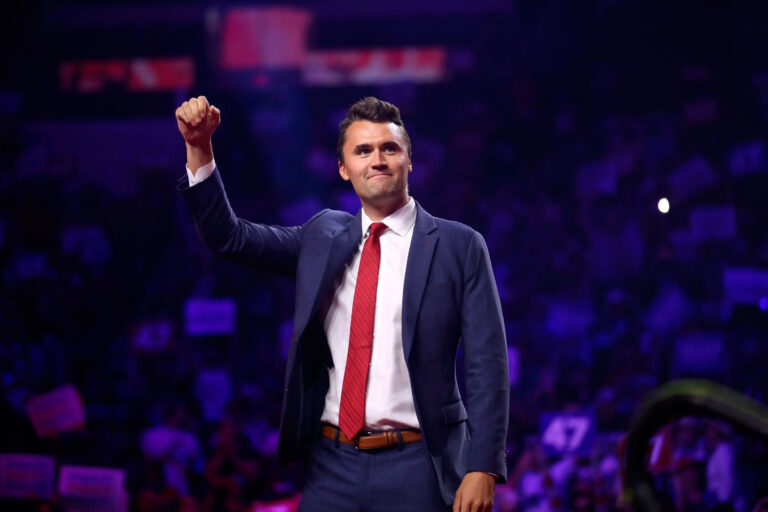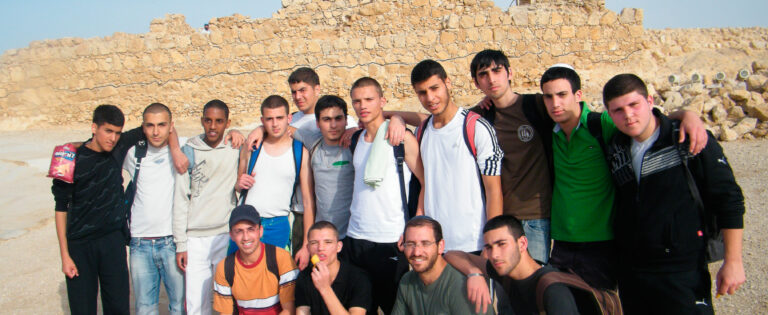It began, as so many Ma’agalim stories do, with silence.
Rafi, 16, was the eldest of five children in a small apartment in Ashdod. His father was gone. His mother, overwhelmed. He was skipping school, breaking into cars, running deliveries for people better left unnamed.
When Ma’agalim assigned him a mentor, Rafi didn’t even pretend to care. He’d light a cigarette and stare out the window.
“Just sign that we met,” he’d mutter, “and let me go.”
Week after week, the mentor stayed. Quiet, patient. Then one day: “Let’s go for a walk.”
They rode to the beach, sat on a rock, ate falafel. Rafi looked over and said, “Okay. What do you want from me?”
The mentor took a long breath.
“I know about your family,” he said softly. “Your situation. Your arrests. But the one thing I don’t know is you. What’s your dream? What do you see when you look at your future? Because I know this isn’t it.”
For a moment, Rafi tried to hold it in – but then he broke. Uncontrollable tears. He said no one had ever asked him that before.
The mentor put an arm around him. “Your past is not your fault,” he said. “But your future – that’s yours to build.”
Something shifted. Slowly, Rafi began showing up. Not just to school, but to life. He got a job delivering pizza, started saving – investing in himself.
Two years later, he stood in uniform – not before a judge, as many had expected, but as a soldier in the elite Sayeret Golani unit, serving with pride and purpose.
He carried himself differently: back straight, eyes forward. In his wallet, a worn photograph: him and his mentor on that same beach.
“He saw me before I saw myself,” Rafi says today. “That’s what Ma’agalim does. He changed my life.”
Rafi’s story is not unique. Across Israel, thousands of teenagers like him stand at the same crossroads – between despair and destiny. For them, hope has a name: Ma’agalim.
Where Hope Begins Walk the streets of Jerusalem or Tel Aviv – from the ancient stones of one to the restless energy of the other – and you can feel the pulse of a nation that refuses to break. Cafés hum with resilience; synagogues echo with prayer. There’s a sense that survival here is a rallying cry to rebuild itself, one act of faith at a time.
Yet behind those vibrant scenes are thousands of Israeli teenagers quietly slipping through the cracks – young people burdened by poverty, trauma, and loss before their lives have even begun. They carry invisible baggage – eviction notices, abuse, empty refrigerators, a parent’s silence.
Every generation of Jews faces its own test of faith and resilience. Ours lies not only on the borders of the nation, but within – in the hearts of the young who are still searching for hope and belonging.
For thousands of at-risk Israeli teens, the answer is Ma’agalim – an organization quietly transforming lives through the empowerment of its next generation. The name means “circles” – circles of trust, mentorship, and belonging. It believes that resilience is not inherited; it’s taught, modeled, and nurtured.
In classrooms from Acre in the north to Dimona in the Negev, mentors sit with teens whose lives have been shaped by absence and uncertainty. They listen more than they speak. And when they do speak, they share their own stories – how they faced the same doubts and found a way through. Slowly, these circles expand. A student who once skipped school now leads a study group. A boy who couldn’t look an adult in the eye now guides younger recruits through their first days of basic training. This quiet work is changing Israel – one life at a time.
What Ma’agalim Is – and Why It Matters
Ma’agalim is a national mentorship network that walks beside Israel’s most vulnerable teenagers during the most critical years of their lives (11th and 12th grade), helping them rediscover hope, confidence, and a sense of purpose.
Now celebrating its 25th year, Ma’agalim serves more than 5,400 students annually in 85 schools across 40+ cities. Its proven success led the Ministry of Education to formally partner with the program, integrating 340 mentorship groups that meet each week in high school classrooms often overlooked by the system.
While the Ministry provides partial support, Ma’agalim depends on donors in Israel and abroad to sustain its growth and impact. Each student receives a tailored program: six hours of weekly one-on-one mentorship; one hour per week of group activity; one day a month of experiential learning; and quarterly leadership intensives.
The mentors are professional educators and youth counselors who undergo more than 140 hours of annual training in adolescent development, trauma response, and values-based leadership. They become the steady adult presence many teens have never had – consistent, nonjudgmental, and unfailingly present. One mentor in Beit Shemesh describes her role this way: “When I walk into the school each morning, I’m not looking for grades – I’m looking for faces. Who looks tired? Who hasn’t spoken today? That’s where I start.”
Former Prime Minister Naftali Bennett once called Ma’agalim, “the ideal platform for helping at-risk youth. The deep connections between mentors and students are nothing short of miraculous.”
Ma’agalim measures success in changed hearts. Still, the numbers speak for themselves: graduation rates nearly double; army eligibility soars; and self-worth – the hardest metric of all – becomes visible in posture and pride.
Faith in Every Teen: The Vision of Assaf Weiss
When Assaf Weiss finished his army service and began volunteering in Israel’s periphery, he saw a gap no one was filling. Programs existed for high achievers, but none for the students being left behind. “I wanted to reach the young people quietly slipping through the cracks,” he recalls, “and help them believe in themselves.”
Weiss often reflects that he wasn’t an ideal teenager himself – restless, headstrong, and often in trouble. He remembers being dangerously close to losing his way until an older friend stepped in, recognized his potential, and helped him turn things around. That small gesture, he says, “changed everything” – planting the seed for a lifetime of giving back.
A former soldier turned educator, Weiss founded Ma’agalim in 1999 with seven mentorship groups and a handful of volunteers – built, from day one, on faith, patience, and an unshakable belief in others. Today, the organization counts more than 45,000 alumni. More than half of its mentors are graduates themselves, creating a self-sustaining circle of impact – each generation lifting the next.
As Ma’agalim grew into a national network, Weiss never lost the personal touch that defined its beginnings. He believes true change starts not with bureaucratic structures, but with relationships – with one adult who refuses to give up. Those who know him describe him as “a mentor of mentors” – a man who still answers calls from former students late at night and insists that every staff meeting begins with a story of success from the field. Every two weeks, he meets with the supervisors who oversee Ma’agalim’s mentors to review progress and confront the hardest cases together – because behind every success story lies heartbreak, hard work, and often tears shed helping a single child find their way back.
Soft-spoken but fiercely determined, Weiss continues to visit schools regularly, sitting in on sessions and listening to students’ stories firsthand. “Every time I walk into a classroom, I’m reminded what this work is really about,” he says. “That moment when a teen realizes they matter – that’s the miracle.”
The Image of Gd in Every Teen
At the heart of Ma’agalim lies a simple Torah truth – that every person is created b’tzelem Elokim, in the image of Gd. The organization serves students of every background: religious, traditional, and secular; native-born Israelis and new immigrants alike.
“We don’t preach faith,” explains founder Assaf Weiss. “We practice it through empathy. Our goal is to help each teen discover purpose, responsibility, and faith in themselves as part of Am Yisrael.”
That approach feels natural to mentors who see their work as a form of hesed and tikkun nefesh – kindness and repair of the soul. “Sometimes the lesson isn’t spoken,” says one mentor in Ofakim, a city near Gaza. “It’s in the way you show up every week, no matter what. They learn that consistency is love.”
Behind Israel’s headlines of innovation and bravery lies a quieter crisis. More than 12 percent of Israeli teens – over 200,000 young people – are known to welfare and school systems as “at-risk.” Many live with instability: absent parents, poverty, unsafe homes, violence, trauma, or the lingering shadows of war and terror. The vast majority come from Israel’s underserved peripheral communities – 90 percent of whom are of Sephardic background – proud, traditional families, many descended from families who came from the Middle East and North Africa (including Ethiopia) and have faced ongoing social and economic hardship.
They are 16- and 17-year-olds, caught between childhood and adulthood. Without guidance or stability, they drift away from school and identity. Ma’agalim reaches them at that fragile crossroads – where giving up feels easier than holding on, and one caring mentor can change a life’s trajectory.
From At-Risk to In-Service
The impact of Ma’agalim’s mentorship reaches far beyond the individual. Every teen who finds their footing strengthens an entire community. In Israel, many young people from the socioeconomic periphery are quietly written off before they have a chance to prove themselves. Classified by the system as “non-eligible” for military service, they’re often denied the opportunity to serve – a rejection that deepens their sense of failure and isolation. Many mentors once faced the same label themselves, which is why they push their students to stand taller. Ma’agalim changes that narrative. Through mentorship, structure, and faith in their potential, students become disciplined and ready to serve.
Today, more than 7,000 Ma’agalim graduates proudly serve in the Israel Defense Forces – in combat, intelligence, and command units once thought out of reach. Since October 7, 2023, Ninety-four graduates have fallen in battle – nearly ten percent of Israel’s fallen soldiers.
Their sacrifice stands as a living testament to Ma’agalim’s mission: to turn vulnerability into strength, and despair into service.
Former Mossad Director Tamir Pardo stated, “It is a clear-cut fact that an organization like Ma’agalim is crucial for the State of Israel. The young men and women who come from the toughest backgrounds show an unparalleled determination to do good and make a difference.”
Expanding the Circle – From Israel to America
Ma’agalim’s remarkable track record — and the growing number of teens in need – has inspired the organization to reach across the Atlantic to build the support required to sustain and expand its mission.
That effort is now led by Samuel Franco, a seasoned Jewish-communal professional with deep roots in philanthropy. Over the years, he’s worked in what he calls “the major leagues” – from UJA-Federation of New York’s Wall Street Division to AIPAC. He’s helped raise millions – yet something still felt missing.
“I wanted something more personal,” he recalls. “Something that connected heart to impact. That’s what drew me to Ma’agalim.”
Franco remembers sitting in on a meeting between a mentor and a student of his from Netanya – a quiet conversation about life, faith, and purpose. “Listening to them,” he says, “I realized what Ma’agalim truly is: not a program, but a circle of people who lift one another, one story at a time.”
In that moment, he understood that Ma’agalim isn’t just about changing lives — it’s about rebuilding the fabric of our people, one conversation at a time. Today, as Executive Director of American Friends of Ma’agalim, Franco is determined to make the organization a household name in the Jewish world – especially in North America. “This work deserves to be known,” he says. “We reach about 5,400 students each year, but tens of thousands still need help. Schools are begging us for more support. We want Ma’agalim in every city where teens need this guidance.”














